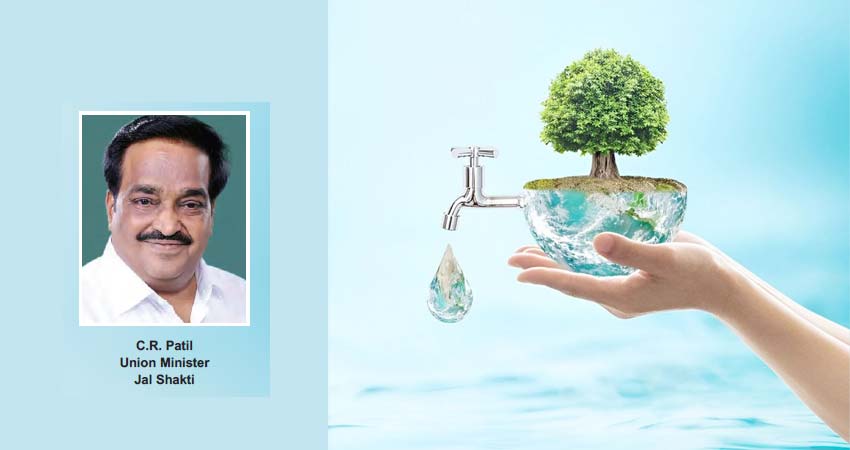
A New Era of Water Conservation Under C.R. Patil
India, a nation deeply rooted in agrarian practices, has always grappled with the challenges posed by water scarcity. With a population exceeding 1.4 billion and an agricultural sector that consumes nearly 90% of the country’s freshwater resources, the urgency for effective water management has never been more critical. However, the recent appointment of C.R. Patil as the Union Minister of Jal Shakti marks a significant turning point in the country's water conservation efforts. As the nation embarks on a new era under Prime Minister Narendra Modi's third term, Patil's aggressive and meticulous approach to water conservation has infused a renewed sense of hope and optimism.
Patil's tenure has been characterized by a series of proactive measures aimed at addressing the water crisis. Recognizing the pivotal role of groundwater in India's agricultural and domestic sectors, he has initiated several projects to replenish and protect these vital water resources. For instance, the "Jal Shakti Abhiyan" launched in 2019 aimed at creating rainwater harvesting structures and rejuvenating traditional water bodies has shown promising results in several states. By encouraging the adoption of sustainable agricultural practices, promoting rainwater harvesting, and investing in advanced water treatment technologies, Patil is working towards a future where water scarcity is a thing of the past.
One of the most notable aspects of Patil's leadership is his emphasis on grassroots participation. He has successfully mobilized communities across the country to take ownership of water conservation efforts. Through awareness campaigns, capacity-building programs, and financial incentives, Patil has inspired millions of Indians to adopt water-saving habits in their daily lives. For instance, the Ministry of Jal Shakti has partnered with local NGOs and educational institutions to educate rural communities on water management techniques. This bottom-up approach has not only led to tangible results—like increased groundwater levels in drought-prone areas—but has also fostered a sense of collective responsibility towards water conservation.
Furthermore, Patil's commitment to technological innovation has been instrumental in enhancing India's water management capabilities. By leveraging advanced data analytics, remote sensing technologies, and satellite imagery, his ministry can monitor water resources in real-time and develop targeted interventions. Initiatives such as the National Water Informatics Center (NWIC) have been pivotal in collecting and analyzing hydrological data across the country. This data-driven approach has enabled the government to make informed decisions and allocate resources efficiently, ensuring that critical areas receive timely assistance.
Patil's aggressive pursuit of water conservation goals is underpinned by a deep understanding of the complex challenges facing India. He has consistently emphasized the need for a multi-pronged strategy that addresses both the supply and demand sides of the water equation. This includes promoting water-efficient irrigation systems such as drip and sprinkler irrigation, which can reduce water usage by up to 60% compared to traditional methods. By focusing on water conservation, improving water efficiency, and augmenting water supply through various means, including desalination projects along India's vast coastline, Patil is working towards achieving water security for all Indians.
In addition to these initiatives, Patil has also launched campaigns aimed at reducing plastic pollution in water bodies, recognizing the detrimental impact of plastic waste on freshwater ecosystems. Initiatives like "Swachh Jal" seek to clean rivers and lakes, thereby preserving these critical resources for future generations.
In conclusion, C.R. Patil's tenure as the Union Minister of Jal Shakti has ushered in a new era of water conservation in India. His unwavering commitment, combined with a strategic approach and a focus on grassroots participation, has positioned India on a path towards sustainable water management. As the nation continues to grapple with the challenges of climate change and population growth—predicted to increase by over 300 million by 2036—Patil's leadership provides a beacon of hope for a water-secure future. By fostering innovation, community engagement, and effective policy implementation, India stands a better chance of overcoming its water crisis and ensuring the availability of this precious resource for generations to come.